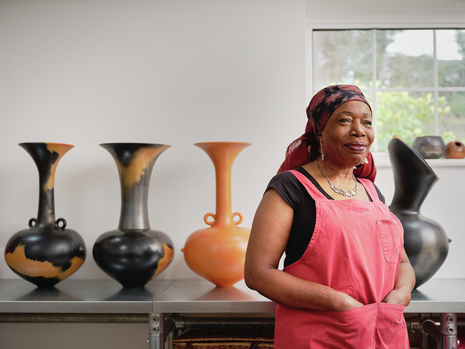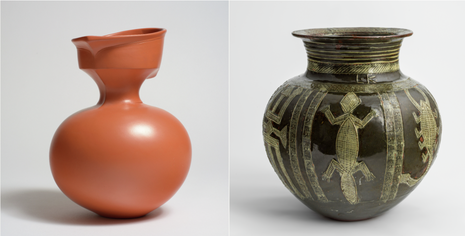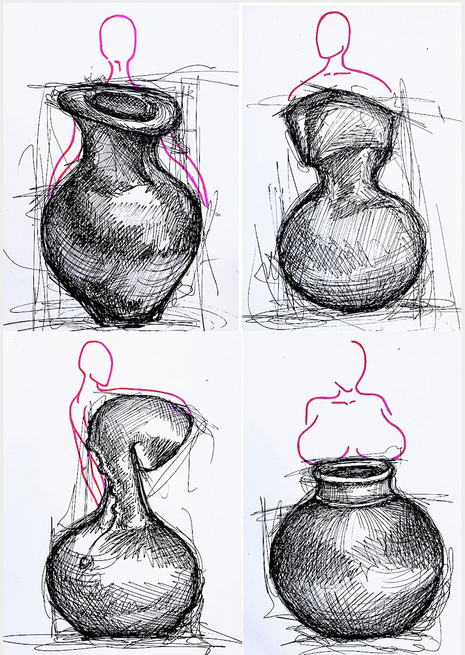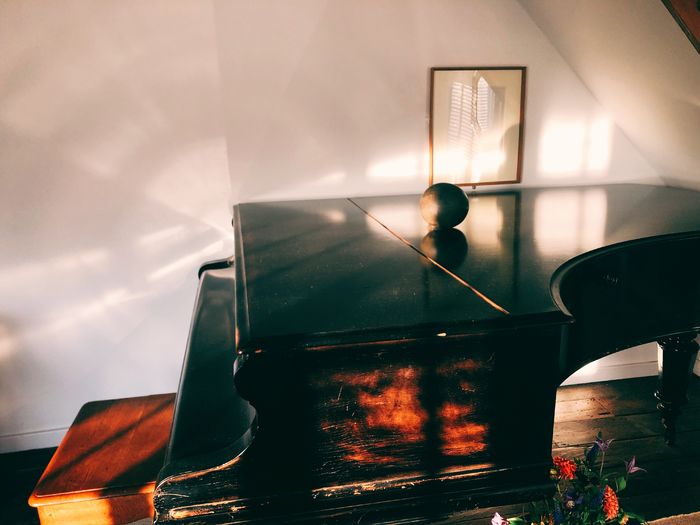‘Magdalene Odundo in Cambridge’: A Fitzwilliam exhibition
Tara Panesar and Erika Dovey review the fascinating pottery of Kenyan-born Magadelene Odundo, featured in the Fitzwilliam Museum

Dame Magdalene Odundo — Kenyan born British studio potter - has brought to life the ceramics section of the Fitzwilliam in the must see exhibition: Magdalene Odundo in Cambridge. The exhibition marks Odundo’s return to Cambridge. Arriving in 1971, she spent her formative years studying at the Cambridge School of Arts — the place she discovered her love for ceramics. Odundo then went on to study at the Pottery Training Centre in Abuja, Kenya where she learnt traditional hand-built pottery techniques.
"Odundo works from the inside out, meaning much of the pieces remain out of our visibility"
The exhibition not only displays three of her distinctive burnished pots, but a wide variety of her favourite pieces from both the Fitzwilliam Museum and the Museum of Archaeology and Anthropology. Entering the exhibition you are met with a black pot typical of Odundo’s style, burnished down from its original terracotta colour often retained for many of Odundo’s other pots. Odundo rejects explanation of pieces; she wants her art to do the work. Throughout the exhibition, description is reduced to a minimum. Instead, Odundo encourages viewers themselves to question and evaluate her pieces, wanting them to “feel empathetic”.
Odundo works from the inside out, meaning much of the pieces remain out of our visibility, leaving us to imagine the shapes and spaces the objects encapsulate. In this way, the pieces parallel the human appearance; much is informed by what's inside. Walking through the exhibition you get a sense of Odundo’s love for ceramics, ranging from the Thomas Toft and Ralph Simpson slipware from the 1600s to the 1950s Lucie Rie stoneware gifted to Odundo’s teacher Zoe Ellison. The exhibition reveals the power of clay in that it cannot be said to have originated from one single place, culture or artistic tradition — rather it is timeless.
The exhibition achieves Odundo’s desire to show the “versatility of clay, as a form of expression but also as a material”. Witness the juxtaposition between the simplicity of Odundo’s ‘red angled ribbed vessel’ and the decorative feel of Ladi Kwali’s ‘water jar with lizards’: this exhibition liberates us from confining judgements and categorisations (both pictured below).

However, through the methods of display viewers may struggle to view Odundo’s work as isolated, self-contained pieces. Curator of the exhibition Helen Ritchie has framed the works within a sea of various ceramics, ranging from 20th century Nigerian stoneware to early modern British glazed pottery to Kenyan cooking pots. This gives the viewer a sense of pieces which may have informed Odundo’s artistic choices, and also encourages them to consider her work in relation to contemporary and historical practices instead of as separate entities.
The museum has taken steps towards ensuring that Odundo’s work stands out from the surrounding pottery; the podiums that hold her pieces are orange and the rest black. Indeed, aesthetic composition such as this amplifies Odundo’s view — “the work, the vessel, must come first” — encouraging viewers to be “looking and noticing” at her work, relating and empathising with the shape, texture and colour.

I would encourage those who visit ‘Magdalene Odundo In Cambridge’ to follow her advice and spend time looking, scrutinising and thinking about her work. Personally, the more I focus on her isolated pieces the more figural forms emerge. In all four works, pictured above, the expanding and retracting forms, smooth finish and ridged surface are reminiscent of the curvature, skin and bones of the human body. Rounded stomachs, necks and spines can all be detected in the shapes of these works, blurring the line between ceramics and sculpture. The prominence of the human body in Odundo’s work inspired the featured sketches that juxtapose the ceramic and figural form, emphasising the continuity of the two.
"The museum has taken steps towards ensuring that Odundo’s work stands out from the surrounding pottery"
As well as showing Odundo’s talent, curator Helen Ritchie hopes that through connecting her work to her time spent in Cambridge, students will feel inspired to look towards the University of Cambridge Museums for their own creative projects. Through looking, interpretations of Magdalene Odundo’s artwork are endless.
Find out what you see in her pieces by visiting the exhibition in The Fitzwilliam Museum that is open until the 24th July 2022.
 News / Caius mourns its tree-mendous loss23 December 2025
News / Caius mourns its tree-mendous loss23 December 2025 News / Clare Hall spent over £500k opposing busway 24 December 2025
News / Clare Hall spent over £500k opposing busway 24 December 2025 Comment / The ‘class’ of Cambridge24 December 2025
Comment / The ‘class’ of Cambridge24 December 2025 Comment / Yes, I’m brown – but I have more important things to say22 December 2025
Comment / Yes, I’m brown – but I have more important things to say22 December 2025 Interviews / Politics, your own way: Tilly Middlehurst on speaking out21 December 2025
Interviews / Politics, your own way: Tilly Middlehurst on speaking out21 December 2025









